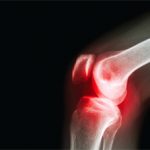NEW YORK (Reuters Health)—Volleyball players with patellar tendinopathy reported an immediate easing of their pain after isometric exercise, and the effect persisted for 45 minutes after the intervention, a new study has found.
In contrast, isotonic exercise appeared to diminish the athletes’ pain to a lesser degree, and the effect did not last at the 45-minute follow-up, according to results published online May 15 in the British Journal of Sports Medicine.
“Try using isometric muscle contractions to reduce tendon pain immediately and get them to use it regularly throughout the day to reduce pain,” Ebonie Rio, at Monash University in Melbourne, Australia, who led the study, told Reuters Health by email.
The researchers tested six male volleyball players in a crossover trial of both isometric contractions without moving the joint and isotonic exercise in which the joint moves slowly and the muscles tense under heavy concentric and eccentric resistance.
The primary outcome was pain during a single-leg decline squat.
Isometric pain decreased from seven (±2.04) on a 10-point scale to 0.17 (±.41). Isotonic exercise, on the other hand, reduced pain from 6.33 (±2.80) to 3.75 (±3.28). The difference in pain reduction was statistically significant but the baseline differences between the two intervention groups were not, the study found.
The researchers also tried to sort out a mechanism for the pain reduction. Using transcranial magnetic stimulation, the researchers measured changes in the inhibitory neural pathways before and after each intervention. They found a decrease in intracortical inhibition after isometric contractions that was absent after isometric exercise.
One of the implications of the finding may be that the analgesic effect of isometric contractions might not be a widespread inhibition of pain along the central nervous system, as past studies have suggested.
Another indication that the effect might be localized is that three participants who had bilateral knee pain did not experience significant pain reductions in the knee that they did not treat during the trial.
“The authors note that this may indicate that this may mean it is ‘not simply a consequence of systemic inhibitory control.’ This requires further investigation and evaluation of different potential mechanisms of analgesia,” Matthew Briggs, a sports physical therapy specialist at Ohio State University in Columbus, who was not involved in the research, told Reuters Health by email.
“The results are intriguing, but for a definitive answer, a study with a larger sample size would need to be conducted to ensure generalizability of the results,” Briggs said.
Rio’s clinical experience suggests that the intervention may also treat other lower limb tendons.
“Ensure there is no compression, for example if applying this to the Achilles insertion, ensure they are in full plantar flexion to avoid compression of the Achilles against the calcaneus. Time under tension and load is important as is rest between holds for complete muscle recovery,” Rio said.
The authors reported no funding or study-related disclosures.

